Publications of Farid-e-Millat Research Institute
Allah be thanked many a time that with the cooperation different organs of the Institute, more than three hundred and forty books of Shaykh-ul-Islam Dr Muhammad Tahir-ul-Qadri on different topics have seen light of the day in Urdu, English and Arabic languages under Farid-e-Millat Research Institute. The translation work of his Urdu books into different languages also continues with zeal and zest. Besides this, workers and people associated with MQI are also busy getting these books published in their local languages. Following is the table showing details of the books:
Though every book represents perfection of writing skill coupled with alluring descriptive style, having the depth of knowledge and distinctive characteristics, yet we present here below the brief introduction of some of his magnum opus:
1- Irfan-ul-Quran
By the grace of Allah Almighty, our beloved leader, Shaykh-ul-Islam Dr Muhammad Tahir-ul-Qadri, started Urdu translation of the Holy Quran by name of Irfan-ul-Quran whose 22 paras were completed rill 2005. On July 20, 2005, Shaykh-ul-Islam completed the transition of the remaining paras during his stay in Canada. The translation of the Holy Quran was published in its entirety in the sacred month of Ramzan 1426 hegira.
Irfan-ul-Quran is a unique translation of the Holy Quran, which is distinct from other available translations in a number of ways. Following are the chief characteristics of Irfan-ul-Quran, which distinguish it from others:
- This translation is uniformly understandable for every mental level and has unique style of description characterized by idiomatic language and simplicity.
- Though this being a translation, it has the quality of exegesis inherent in it. The readers do not have to look for commentaries in order to get further explanation of the Quranic verses. It is self-sufficient.
- This not only helps in understanding the meanings of the Holy Quran but is also instrumental in strengthening the faith of the reader.
- It is full of spiritual taste and fosters pious action.
- This translation is such a masterpiece representing Divine Reverence and the respect for the Holy Prophet (saw) as takes special care of all manners and stations.
- It is an embodiment of spiritual gnosis and strength of faith.
- It is the most modern Urdu translation of reconstructive value in keeping with the demands of contemporary age.
- It is such a magnum opus marked by scholarly depth and rich symbolism which also contains rational meditation and practicality as distinctive aspects.
- It not only describes the Quranic geography but also mentions the historical background of the past nations.
In order to convey the real message of the Holy Quran to the Western world, English translation of the Holy Quran was dire need of the hour. By grace of Allah Almighty, this arduous task has been accomplished. Shaykh-ul-Islam Dr Muhammad Tahir-ul-Qadri’s English translation of the Holy Quran by name of ‘Irfan-ul-Quran’ has been published.
Please see the irfan-ul-quran.com for online study of Irfan-ul-Quran.
2- Tafseer Minhaj-ul-Quran
Such an exegesis of the Holy Quran, which caters to the contemporary demands, has always been the most important need of the modern age. Work on this task has already begun and by grace of Allah would be completed soon. We should all pray for the long life and good health of Shaykh-ul-Islam Dr Muhammad Tahir-ul-Qadri so that he could gift such a scholarly treasure to Muslim Umma. So far, the exegesis of the first four verses of Sura al-Baqra and its salient interpretative points have been published. Following are the main features of this interpretation:
- This forms a rare and unique addition to history of translation and exegesis of the Holy Quran.
- Given diversity of subjects, uniqueness of styles and creative ways of description, this exegesis represents a one step forward in the existing body of knowledge of modern and ancient exegesis.
- It is comprehensive and a combination of the modern and ancient.
- It contains a valuable treasure of intellectual dynamisms and reconstruction.
- It takes care of literal, metaphorical, literary, scholarly and interpretative aspects.
- Thousands of the Quranic subjects have been organized into a coherent order of topics for the first time for better understanding of readers.
- It is a brief encyclopaedia of the Holy Quran.
3- Jami-u-Sunna
Life has been undergoing changes with new realities, challenges and demands confronting it. It is the responsibility of custodians of knowledge in this day and age to confront these challenges and offer practicable solutions. As there is a need to reconstruct the meanings, interpretation and application of the Holy Quran, in the same way there is even greater need to stress the authenticity of Prophetic traditions, which is the major source of Islamic law and inspiration.
Like the Holy Quran, Hadith is also the source of all sciences. Man of every age has benefited and sought guidance from this source. New aspects in the fields of social sciences, natural sciences, economics and medical sciences are emerging. New civilizations and cultures are taking birth. The Islamic history has reached a critical juncture where it is exposed to new challenges and issues. We need the same light, conviction and strength of faith to successfully take on these challenges as has been the mark of distinction of believers in every age. Doing that is not possible without the aid and support of such authentic knowledge as the Holy Quran and Sunna.
There is a need to formulate authentic collections of Hadith on such basic topics as politics, economy, training, trade & commerce and education etc. No doubt, the work on these topics is underway in our universities and religious institutions but its ambit needs to be expanded for the benefit of general people away from examination and research needs.
There is also need to interpret the meanings of Hadiths in the background of contemporary age. The old idiom and interpretations do not fit in with the demands of modern age. The world has changed and new realities have cropped up.
Some misunderstandings in the Muslim Umma are the ‘gift’ of period of decline and some have been hatched in an organized manner. Especially there are differences in beliefs, which provoke people to take up arms against one another and foster dissention in the ranks of Muslims enabling the forces of the falsehood to exploit these conditions for their nefarious agendas.
The above-mentioned facts show that there is a great scope of service and contribution in the discipline of Hadith in the contemporary age. An insightful scholar of Shaykh-ul-Islam Dr Muhammad Tahir-ul-Qadri’s stature acknowledged the need of contribution. One of the chief qualities Allah Almighty has blessed him with is that he not merely makes scholarly collection, rather a whole generation of people especially youth is so beholden to him that it is ready to render any sacrifice for him. A world is benefiting from his research, intellectual and scholarly services. Though he has transferred valuable collection of knowledge to the nation on such topics as Tafseer, Sira, Mysticism, Science, Economics, Political Science, Sociology and Thought in the form of books and CDs and DVDs yet the commitment and devotion with which he rendered his service in the field of Hadith has not been the share of any other person in Arabic and non-Arabic Muslim world in our age. No doubt it was expected of scholar of his stature that he would pay attention to the fulfilment of such religious need. One of such collections is Jamia-us-Sunna, which would comprise more than 18 volumes containing a collection of Hadith from 25, 000 to 30, 000 in a new order, chapters and prevailing referential work. One volume belonging to this collection has been published so far by the name of ‘al-Manaqib’. The names of some of the volumes are mentioned here below:
4- al-Minhaj-us-Savi
Numerous scholars have undertaken the task of collection and ordering of Hadith on different subjects which can be categorized under different heads. ‘Mishkat-ul-Masabah” by Khateeb Tibraiz, ‘at-Turgheeb wat-Tarhaeeb min al-Hadith ash-Sharif, by Imam Mundari, ‘Riaz-ul-Salaheen’ by Imam Novi, and ‘al-Mutjar---‘ by Imam Damyouti are prominent books which were published centuries ago. It goes to the credit of Shaykh-ul-Islam Dr Muhammad Tahir-ul-Qadri who made a huge collection of Hadith on miscellaneous topics in accordance with the demands of the contemporary age, which was published under FMRi. Following are some of the prominent features:
- This book of about one thousand pages contains eleven hundred Hadith.
- Simple Urdu translation along with proper references has also been done for those familiar with the Urdu language.
- This collection of Hadith derived from vast treasure of the Prophetic traditions is equally useful for people of every category.
- About three hundred authentic books on Hadith have been consulted.
- This book prepares the ground for correction of religious beliefs, inspires readers to act piously and provides practical guidance in practical life.
5- Books on Hadith
The books being prepared by Farid-e-Millat Research Institute (FMRi) contains valuable treasure of knowledge of authentic prophetic traditions whose Urdu translation is of equal interest to the commonplace reader. These books are also of great research value for the research scholars due to their richness in references. Some of the published works are given here below:
- Al-Minhaj al-Sawi min al-Hadith al-Nabawi
- Fahm-e-Din awr Islah-e-Ahwal wa Aqa’id par Majmu‘a Ahadith ma‘ Tarjuma
- Hidaya al-Umma ‘ala Minhaj al-Qur’an wa al-Sunna
- Juzw Awwal: Ummat-e-Muhammadiyya ke liye Qur’an wa Hadith se Zabita-e-Rushd-o-Hidayat
- Jami‘ al-Sunna fima Yahtaj Ilayh Aakhir al-Umma
- Kitab al-Manaqib): Anbiya’ Karam, Ahl Bayt Athar, Sahaba Karam awr Awliya’ wa Salihin ke Faza’il ma‘ Arabi Matn, Tarjuma wa Tahqiq-o-Takhrij
- Al-Khutba al-Sadida fi Usul al-Hadith wa Furu‘ al-‘Aqida Arabic
- Al-‘Abdiyya fi al-Hadra al-Samadiyya
- Bargah-e-Ilahi se Ta‘alluq-e-Bandagi
- Al-Bayan fi Rahma al-Mannan
- Rahmat-e-Ilahi par Iman Afroz Ahadith Mubaraka ka Majmu‘a
- Al-Makana al-‘Aliyya fi al-Khasa’is al-Nabawiyya
- Huzur (PBUH) ke Nabawi Khasa’is Mubaraka
- Al-Mizat al-Nabawiyya fi al-Khasa’is al-Dunyawiyya
- Huzur (PBUH) ke Dunyawi Khasa’is Mubaraka
- Al-‘Azama al-Nabawiyya fi al-Khasa’is al-Barzakhiyya
- Huzur (PBUH) ke Barzakhi Khasa’is Mubaraka
- Al-Futuhat al-Nabawiyya fi al-Khasa’is al-Ukhrawiyya
- Huzur (PBUH) ke Ukhrawi Khasa’is Mubaraka
- Al-Jawahir al-Naqiyya fi al-Shama’il al-Nabawiyya
- Huzur (PBUH) ke Shama’il Mubaraka
- Al-Matalib al-Saniyya fi al-Khasa’il al-Nabawiyya
- Huzur (PBUH) ke Khasa’il Mubaraka
- Al-Wafa fi Rahma al-Nabi al-Mustafa (PBUH)
- Jami‘ Khalq par Huzur Nabi Akram (PBUH) ki Rahmat wa Shafqat
- Bushra li al-Mu’minin fi Shafa‘a Sayyid al-Mursalin (PBUH)
- Shafa‘at-e-Mustafa (PBUH) par muntakhab Ahadith Mubaraka
- Al-Badr al-Tamam fi al-Salat ‘ala Sahib al-Dunuww wa al-Maqam
- Durood Sharif ke Faza’il-o-Barakat
- Kashf al-Asrar fi Mahabba al-Mawjudat li-Sayyid al-Abrar
- Huzur (PBUH) se Haywanat, Jamadat awr Nabatat ki Mahabbat
- ‘Umda al-Bayan fi ‘Azama Sayyid Walad ‘Adnan (PBUH)
- Huzur Nabi Akram (PBUH) ki ‘Azmat awr Ikhtiyarat
- Al-Ni‘ma al-‘Ulya ‘ala Awwal al-Khalq wa Aakhir al-Anbiya’
- Huzur (PBUH) ka Sharaf-e-Nubuwwat awr Awwaliyyat-e-Khilqat
- Raha al-Qulub fi Madh al-Nabi al-Mahbub (PBUH)
- Midhat-o-Na‘t-e-Mustafa (PBUH) par Muntakhab Ayat-o-Ahadith
- Ahsan al-Subul fi Manaqib al-Anbiya’ wa al-Rusul (A.S.)
- Anbiya’ wa Rusul (A.S.) ke Faza’il-o-Manaqib
- Al-Najaba fi Manaqib al-Sahaba wa al-Qaraba (R.A.)
- Sahaba Karam wa Ahl Bayt Athar (R.A.) ke Faza’il-o-Manaqib
- Al-Ijaba fi Manaqib al-Qaraba (R.A.)
- Ahl Bayt Athar (R.A.) ke Faza’il-o-Manaqib
- Al-Inaba fi Manaqib al-Sahaba (R.A.)
- Sahaba Karam (R.A.) ke Faza’il-o-Manaqib
- Al-Qawl al-Wathiq fi Manaqib al-Siddiq (R.A.)
- Sayyiduna Siddiq Akbar (R.A.) ke Faza’il-o-Manaqib
- Al-Qawl al-Sawab fi Manaqib ‘Umar bin al-Khattab (R.A.)
- Sayyiduna Faurq-e-A‘zam (R.A.) ke Faza’il-o-Manaqib
- Rawd al-Jinan fi Manaqib ‘Uthman bin ‘Affan (R.A.)
- Sayyiduna ‘Usman-e-Ghani (R.A.) ke Faza’il-o-Manaqib
- Kanz al-Matalib fi Manaqib ‘Ali bin Abi Talib (R.A.)
- Sayyiduna ‘Ali (R.A.) ke Faza’il-o-Manaqib
- Al-‘Iqd al-Thamin fi Manaqib Ummahat al-Mu’minin
- Ummahat-ul-Mu’minin ke Faza’il-o-Manaqib
- Al-Durra al-Bayda’ fi Manaqib Fatima al-Zahra’ (R.A.)
- Sayyida Fatima (R.A.) ke Faza’il-o-Manaqib
- Maraj al-Bahrayn fi Manaqib al-Hasnayn (R.A.)
- Hasnayn Karimayn (R.A.) ke Faza’il-o-Manaqib
- Al-Sayf al-Jali ‘ala Munkir Wilayat ‘Ali (R.A.)
- I‘lan-e-Ghadir
- Al-Qawl al-Mu‘tabar fi al-Imam al-Muntazar (A.S.)
- Imam Mahdi (A.S.)
- Rawda al-Salikin fi Manaqib al-Awliya’ wa al-Salihin
- Awliya’ wa Salihin ke Faza’il-o-Manaqib
- Glaring Signs of Merits and Virtues
- Al-Manahil al-Safiyya fi Sharaf al-Umma al-Muhammadiyya
- Ummat-e-Muhammadiyya ka Sharaf awr Fazilat
- Ahsan al-Sana‘a fi Ithbat al-Shafa‘a
- ‘Aqida Shafa‘at: Ahadith Mubaraka ki Rawshani main
- Al-Safa fi al-Tawassul wa al-Tabarruk bi al-Mustafa (PBUH)
- Huzur Nabi Akram (PBUH) se Tawassul awr Tabarruk
- Al-Salat ‘ind al-Hanafiyya fi Daw‘ al-Sunna al-Nabawiyya
- Huzur Nabi Akram (PBUH) ka Tariqa Namaz
- Al-Tasrih fi Salat al-Tarawih
- Bis Rak‘at Namaz Tarawih ka Subut
- Al-Naja fi Iqama al-Sala
- Faza’il-e-Namaz par Muntakhab Ayat-o-Ahadith awr Asar-o-Aqwal
- Al-Du‘a wa al-Dhikr ba‘d al-Salat
- Namaz ke ba‘d Hath Utha kar Du‘a Mangne awr Zikr bil-Jahr karne par Majmu‘a Ayat-o-Ahadith
- Al-In‘am fi Fadl al-Siyam wa al-Qiyam
- Roza awr Qiyam-ul-Layl ki Fazilat par Muntakhab Ayat-o-Ahadith
- Al-Intibah li al-Khawarij wa al-Harura’
- Gustakhan-e-Rasul: Ahadith-e-Nabawi ki Rawshani main
- Al-Lubab fi al-Huquq wa al-Aadab
- Insani Huquq-o-Aadab: Ahadith-e-Nabawi ki Rawshani main
- Minhaj al-Salama fi al-Da‘wa ila al-Iqama
- Iqamat-e-Din awr Amn-o-Salamti ki Rah
- Tuhfa al-Nuqaba’ fi Fadila al-‘Ilm wa al-‘Ulama
- Farogh-e-‘Ilm-o-Sha‘ur ki Ahamiyyat-o-Fazilat
- Al-Kanz al-Thamin fi Fadilat al-Dhikr wa al-Dhakirin
- Zikr-e-Ilahi awr Zakirin ky Faza’il
- Authentication of Hasan’s Hearing of ‘Ali (R.A.) -
- Takmil al-Sahifa bi Asanid al-Hadith fi al-Imam Abi Hanifa (R.A.) Arabic
- Al-Anwar al-Nabawiyya fi al-Asanid al-Hanafiyya (R.A.)
- ma‘ Uhadiyat al-Imam al-A‘zam (R.A.) Arabic
- Silsila Marwiyat-e-Sufiya’ (1): Al-Marwiyat al-Sulamiyya min al-Ahadith al-Nabawiyya
- Imam Abu ‘Abd al-Rahman Muhammad al-Sulami ki Marfu‘ Muttasil Riwayat
- Silsila Marwiyat-e-Sufiya’ (2): Al-Marwiyat al-Qushayriyya min al-Ahadith al-Nabawiyya
- Imam Abu al-Qasim al-Qushayri ki Marfu‘ Muttasil Riwayat
- Silsila Marwiyat-e-Sufiya’ (3): Al-Marwiyat al-Suhrawardiyya min al-Ahadith al-Nabawiyya
- Shaykh Shahab al-Din al-Suhrawardi ki Marfu‘ Muttasil Riwayat
- Silsila Marwiyat-e-Sufiya’ (4): Marwiyat al-Shaykh al-Akbar min Ahadith al-Nabi al-Athar (PBUH)
- Shaykh Akbar Muhi al-Din Ibn Al-‘Arabi ki Marfu‘ Muttasil Riwayat
- Al-Muntaqa li Asanid al-‘Asqalani ila A’imma al-Tasawwuf wa al-‘Ilm al-Rabbani Arabic
- Kutub-e-Hadith main Marwiyat-e-Imam-e-A‘zam (R.A.)
- Al-Arba‘in fi Fada’il al-Nabi al-Amin (R.A.)
- Huzur Nabi Akram a ke Faza’il-o-Manaqib
- Silsila Arba‘inat: Al-‘Asal al-Naqi fi Asma’ al-Nabi (PBUH)
- Asma-e-Mustafa (PBUH)
- Silsila Arba‘inat: Farha al-Qulub fi Mawlid al-Nabiyy al-Mahbub (PBUH)
- Milad al-Nabi (PBUH): Ahadith ki Rawshani main
- Silsila Arba‘inat: Tuhfa al-Nubala fi Fadl al-Rusul wal-Anbiya’ (A.S.)
- Anbiay’ wa Rusul ki Fazilat
- Silsila Arba‘inat: Atyab al-Tib fi Hubb al-Nabi al-Habib (PBUH)
- Mahabbat-e-Rasul (PBUH) main Sahaba Karam (R.A.) ki Waraftagi
- Silsila Arba‘inat: Nur al-‘Aynayn fi Ta‘a Sayyid al-Saqalayn (PBUH)
- Ita‘at-e-Mustafa (PBUH) main Sahaba Karam l ke Iman Afroz Waqi‘at
- Silsila Arba‘inat: Husn al-Kalam min Mada’ih Sahaba Khayr al-Anam (PBUH)
- Sahaba Karam (R.A.) ke Na‘tiya Kalam Se Intikhab
- Silsila Arba‘inat: al-Madai’h al-Hisan min Kalam Sayyiduna Hassan (R.A.)
- Sayyiduna Hassan b. Thabit ka Na‘tiya Kalam
- Silsila Arba‘inat: Tuhfa al-Anam fi Fazl al-Salat wa al-Salam
- Fazilat e Durood-o-Salam
- Silsila Arba‘inat: Al-Ata’ al-‘Amim fi Rahma al-Nabi al-‘Azim (PBUH)
- Rahmat-e-Mustafa (PBUH)
- Silsila Arba‘inat: Al-Manhal al-Safi fi Ziyara Qabr al-Nabi (PBUH)
- Ziarat-e-Roza Rasul (PBUH) ki Fazilat
- Silsila Arba‘inat: Al-Nur al-Mubin fi Hayat al-Nabi al-Amin (PBUH)
- Hayat-un-Nabi (PBUH)
- Silsila Arba‘inat: Al-Fawz al-Jali fi al-Tawassul bi al-Nabi (PBUH)
- Huzur (PBUH) se Tawassul
- Silsila Arba‘inat: Al-Sharaf al-‘Ali fi al-Tabarruk bi al-Nabi (PBUH)
- Zat-e-Mustafa (PBUH) se Husul-e-Barkat
- Silsila Arba‘inat: Al-Tasarrufat al-Nabawiyya fi al-Umur al-Tashri‘iyya
- Tashri‘i Umur main Tasarrufat-e-Mustafa
- Silsila Arba‘inat: Al-Akhbar al-Ghaybiyya fi al-‘Ulum al-Nabawiyya
- Huzur (PBUH) ka ‘Ilm Ghayb
- Silsila Arba‘inat: Al-Rahamat fi Isal al-Thawab ila al-Amwat
- Isal-e-Sawab
- Silsila Arba‘inat: Jala’ al-Sudur fi Ziyara al-Qubur
- Fadilat-e-Ziarat-e-Qubur
- Silsila Arba‘inat: Hidaya al-Talibin fi Faza’il Khulafa al-Rashidin (R.A.)
- Khulafa-e-Rashidin (R.A.) ke Faza’il-o-Manaqib
- Silsila Arba‘inat: Al-Qawl al-Maqbul fi Dhikr Ashab al-Rasul (R.A.)
- Sahaba Karam (R.A.) ka Zikr-e-Jamil
- Silsila Arba‘inat: Husn al-Ma’ab fi Dhik Abi Turab (R.A.)
- Sayyiduna ‘Ali (R.A.) ka Zikr-e-Jamil
- Silsila Arba‘inat: Al-Futuhat fi al-Adhkar ba‘d al-Salawat
- Namaz Panj Gana ke ba‘d ke Azkar
- Silsila Arba‘inat: Al-Ikram fi Fadl Shahr al-Siyam
- Mah-e-Ramazan ke Fazai’il
- Silsila Arba‘inat: Al-Tawarru‘ fi Fadl Siyam al-Tatawwu‘
- Nafli Rozon ke Faza’il
- Silsila Arba‘inat: Al-Kashshaf fi Fadl Layla al-Qadr wa al-Itikaf
- Shab-e-Qadr awr Itikaf ke Faza’il
- Silsila Arba‘inat: Nur al-Mishka fi Fadl al-Zaka
- Fada’il-e-Zakat
- Silsila Arba‘inat: Al-Thamarat fi Fada’il al-Sadaqat
- Fada’il-e-Sadaqat
- Silsila Arba‘inat: al-Idrak fi Fadl al-Infaq wa Dhamm al-Imsak
- Allah ki Rah main Kharch karne ki Fazilat
- Silsila Arba‘inat: Al-Nadra fi Fadila al-Hajj wa al-‘Umra
- Fada’il-e-Hajj awr ‘Umra
- Silsila Arba‘inat: al-Lawami‘ fi Fadl al-Jawami‘
- Fazilat-e-Masajid
- Silsila Arba‘inat: Khayr al-Kalam fi al-Jumu‘a Sayyid al-Ayyam
- Faza’il Jumu‘at-ul-Mubarak
- Silsila Arba‘inat: Nuzul al-Farhatayn fi Yawm al-‘Idayn
- Faza’il ‘Idayn
- Silsila Arba‘inat: Nur al-Qamarayn fi Fada’il al-Haramayn
- Fada’il-e-Haramayn Sharifayn
- Al-Hadith Al-Asanid: As-Subul al-Wahabiyya fi al-Asanid adh-Dhahabiyya Arabic
- Al-Hadith Al-Asanid: Al-Jawahir al-Bahira fi al-Asanid at-Tahira Arabic
- Ma`arij al-Sunan li al-Najat min al-Dalal wa al-Fitan
6- Sira-tur-Rasool (saw)
A great reconstructive effort of modern age on the subject of Sira-tur-Rasool (saw), is a magnum opus written in Urdu language. Ten volumes of this scholarly masterpiece have been published, which contain the following distinguishing features:
* Sira-tur-Rasool (saw) is such a writing drenched in the love of the Holy Prophet (saw), which creates the respect and reverence of the Holy Prophets in the hearts.
- It is a practical code of conduct aimed at reviving the relationship of obedience and subservience to the Holy Prophet (saw).
- This book is an argumentative response to the objections of non-Muslims scholars and intellectuals at intellectual level and also communicates the cultural, ideological and intellectual background of Islam most effectively.
- It offers solution to the problems of the modern age at social and national levels.
- It is a treasure of easily understandable scholarly arguments, which removes intellectual confusions and creates clarity.
- It gives effective response and answers to the questions of the modern mind.
7- Muqudma Sira-tur-Rasool (saw)
This fact needs to be mentioned that no writer ever authored prologue or Muqudma in the history of Sira writing. Shaykh-ul-Islam Dr Muhammad Tahir-ul-Qadri holds this distinction that he has added a new chapter to the discipline as well as the world of knowledge. He authored two huge volumes of about 1500 pages on Muqudma Sira-tur-Rasool (saw). Thus he also addressed the people of the world and not merely Muslim on the mentioned subject because a normal discourse on Sira could only attract the Muslims and only they could benefit from it.
He has clarified that the purpose behind discourse on Sira is the establishment of such a world where man could live in an ideal society and peacefully because the sacred Sira is not merely person-specific or individualistic in its apparent and hidden perspectives but is also an international Sira. It does not merely offer the code of life for an individual but is a complete code of life for societies and the worlds. With the progress of humanity, the need and importance of Sira would also continue to increase.
The aspects which have been discussed in Muqudma Sira-tur-Rasool (saw) are given are below:
- Religious aspect
- Constitutional aspect
- State aspect
- Scholarly and scientific aspect
- Cultural aspect
- Ideological aspect
- Historical aspect
- Economic aspect
- Contemporary and international aspec
8- Islamic Philosophy of Human life
This book, which is one of the books of Shaykh-ul-Islam Dr Muhammad Tahir-ul-Qadri published in the early days following the inception of Tehreek, won comprehensive applause and approval in the scholarly circles due to its depth and richness. Following are the prominent qualities of the book:
- Actual aims of human life have been highlighted in this book.
- All contents are based directly on the text of the Holy Quran and Sunna.
- This book describes the Quranic strategies of riddance from decline.
- This book directly deals with member of every family and his practical life.
- This book prescribes decisive methodology with regard to bringing about reform and change in social disorder.
9- Quranic Philosophy of Revolution
This is a unique book of its kind which has been derived from the Holy Quran directly. This book, without getting involved in the philosophical complexities, throws light on different aspects of the fundamentals of the Quranic philosophy of revolution. The study of this book inculcates the background and the foreground of the Quranic society in the mind of the reader. Detailed and comprehensive discussion has been held on such subjects as the Quranic philosophy of revolution, history of decline of Umma, the purpose of raising of prophets, Dawa and its importance, the way of bringing about Mustafvi revolution in the light of Sira-tur-Rasool (saw) and the Quranic verses. The books discusses this reality that with the inception of comprehensive decline of Muslim Umma, the forces of falsehood bring about changes in the following seven kinds of basic fundamentals of Islam:
- Change in political thought
- Change in economic thought
- Change in jurisprudential and legal thought
- Change in sociological thought
- Change in civilizational and cultural thought
- Change in religious thought
- Change in educational and training thought
Guidance in the light of the text of the Holy Quran and Hadith has been given as to how to eliminate these negative changes. Based on the innovative and revolutionary style of the Quranic description, this book is counted among the important writings of the century.
10- Human Rights in Islam
This book holds a unique position in the available literature on the subject of human rights and is a scholarly masterpiece in its own way. Individual and collective rights of people have narrated in detail along with comparisons between concept of human rights in Islam and other religions. It has been proven through empirical evidence that the idea of human rights is not the product of the modern age, rather Islam furnished its concept 1400 year ago.
This book contains comparative study of human rights in Islam and Western societies as well as discusses in detail such topics as women rights, rights of non-Muslims, individual and corporate rights, rights of different classes of society and international declaration of human rights. Simple and easy diction has been used. Provisions about human rights described in Madina Pact, Address on Conquest of Makka, and Address on the Last Pilgrimage have been classified with original text.
11- Madina Pact
This unique book of its kind contains the Madina Pact along with Urdu and English translations. It has been established with arguments that:
- The rights of all minorities in addition to Muslim citizens were protected in the Islamic State through Madina Pact;
- The rights of women have been guaranteed;
- Despite progress in the field of law, Madina Pact is more comprehensive and perfect document than any other ideal constitution of the modern world in view of prevalent constitutional standards;
- Madina Pact enjoys yet another distinctive edge on other constitutions of the world. That is that it gives complete guarantee to the continuity of its contents along with its comprehensiveness;
- The book also describes in detail the circumstances prevailing before Madina Pact and the result of this Pact besides narration of opinions and comments of orientalists about this grand Constitution;
12- Islam and Modern Science
This unique book of modern age describes the scientific facts scattered here and there in the Holy Quran and proves that Islam is a religion of every age which offers guidance on every aspect of human life. Light has been thrown on the fact that Islam played critical role in the development of science. It also answers the objections of such conservative people who hold that Islam and science are anti-thesis to each other.
13- Imam Abu Hanif: Imam-ul-Aima fil Hadith
In the eyes of people of knowledge, grand jurists like Imam-e-Azam Abu Hanifa are counted among the attributes of the Holy Prophet (saw). As the Holy Quran is the living miracle and attribute of the Holy Prophet (saw), the collection of Prophetic traditions to preserve the Sunna of the Prophet (saw) is also one of his attributes. In the similar manner, the existence of respected jurists in general and Imam-e-Azam in particular is also the living miracle of the finality of Prophethood. All scholars are of the consensus opinion that Imam Azam Abu Hanifa undertook the task of compilation of jurisprudence for the first time. A grand jurist like Imam Shafi said: “Whosoever would seek knowledge of religion till Day of Judgment, he would be indebted to the blessings of knowledge of Abu Hanifa.”
It is said the greater the personality the greater the level of resistance. Such people are exposed to great trial and tribulation. Imam Abu Hanifa had also to pass through difficulties and intense opposition. Like great statesmen, Imam Abu Hanifa faced two challenges and difficulties at the same time. One level of difficulty was the traditional opposition of the kingdom because it was in the times of Imam Abu Hanifa that kingdom of Banu Ummayide came to an end and that of Banu Abbas was inaugurated. He was put behind bars and faced the rigours of imprisonment on regular basis on the orders of Abu Jafar Mansoor of Banu Abbas and last king of Banu Ummayad dynasty Marvan Bin Muhammad. He finally embraced martyrdom when he was compelled to drink poison by the kingdom, the worst sign of tyranny.
Neither did he commit any moral crime nor did he cause anyone any injury or damage any other property. His only crime was that he refused to become the part of tyrannical regime through his rejection of high government offices of Grand Mufti and Minister for Finance. This was the physical torture that was perpetrated on him and this came to an end with his demise. There was another kind of oppression, bias and thanklessness which his contemporary religious scholars continued against him. Afterwards religious classes of biased mindsets kept on having the same attitude against the revered Imam. After the passage of centuries, people with similar belief system and warped religious mindset are hell bent on defiling the character of the Imam even today. The biggest propaganda being undertaken by such nefarious elements pertains to his lack of and estrangement from the knowledge of Hadith. How ironic and unfortunate it is that about 80% people of the Muslim world are the followers of the jurisprudence designed by the great Imam, yet he is said to be unaware of knowledge of Hadith. However, it is swing of fate that despite continuous biased efforts and inimical attitude, Imam Abu Hanifa is still the ‘Imam-e-Azam or Grand Imam’. By grace of Allah Almighty he would continue to don this honour as long as this world lives.
Shaykh-ul-Islam Dr Muhammad Tahir-ul-Qadri, the founding leader of Minhaj-ul-Quran International, a representative organization of correct message of Islam and religious personages especially jurists and experts of knowledge of Hadith, also focused his attention on this issue in addition to working on other intellectual fronts. He collected the contributions and distinctions of the great Imam on knowledge of Hadith. He organized a prestigious two conferences one in United Kingdom and other in Pakistan before giving his research the form of the book. As usual, keynote speeches of Shaykh-ul-Islam delivered at these conferences were rendered into book form. Religious scholars of every age acknowledged the praise-worthy services of Imam Abu Hanifa and authored books on his knowledge of Hadith. It is interesting to note that more than Hanfi people, it is the Malkis, Shafis and Hambilis who have written more on the Imam’s contributions. These prominent scholars included Imam Abu Abdullah Ahmad Bin Ali Seemri, Qazi Abu Umer Yousuf Bin Abdul Ber Maliki, Imam Muhammad Bin Muhammad Ghazali Shafi, Imam Fakhar-ud-Din Razi Shafi, Imam Abu Zakeria Yahya Bin Sharif Novi Shafi, Hafiz Jamal-ud-Din Yousuf Bin Abdur Rehman Mazi Shafi, Imam Shams-ud-Din Muhammad Bin Ahmad Zehbi Shafi, Mujuddin Ferozabadi Shafi, Hafiz Ibne Hajir Asqalani Shafi, Allama Yousuf Bin Abdul Hadi Humbali, Imam Jalal-ud-Din Suyyuti Shafi, Hafiz Muhammad Bin Yousuf Salehi Damashqi Shafi, Qazi Hussain Bin Muhammad Diyar Bakeri Malki, Imam Ahmad Bin Hijer Hateemi Makki Shafi, and Imam Abdul Wahab Sheerani Shafi.
Besides this, work was done on the Imam in both Arab and non-Arab world in last three centuries. But there was a dire need of such a comprehensive and voluminous book which could encompass the excellent contributions of the great Imam to the science of Hadith like his work on jurisprudence. Doing so was historic responsibility of the followers of the Imam. Nature conferred this rare honour on Shaykh-ul-Islam Dr Muhammad Tahir-ul-Qadri. The subjects he held his scholarly discourse on with the help of allusions and references includes difference between knowledge of Hadith and jurisprudence of Hadith, research of the prophetic glad tidings in favour of the grand Imam and the pillars of science of Hadith derived by the Imam. It has been established in the book with the help of historical references that the grand Imam is an heir of knowledge of Hadith of holy companions, Imams of the Prophetic Household and respected Tabaeen and he is the mentor of mentors of many renowned scholars of Hadith including Imam Bokhari, Imam Muslim, Imam Trimzi, Imam Abu Dawood, Imam Nisai, and Imam Maja etc.
If the Prophetic traditions narrated by the students of the grand Imam are set aside, nothing is left in the six books of Hadith. 96 prophetic traditions have been listed at the end of the book in order to prove the prologue, which were narrated by the Imam. Diversity of subjects discussed, their beautiful ordering and the provision of material from authentic sources of knowledge are those characteristics of the book which give it an edge over other contemporary books on the subject.
14- Kitab-ud-Touheed
Belief in Monotheism and Messengership are part of those basic beliefs of Islam upon which is erected the entire edifice of this great religion. Both of these two are in fact sides of the same coin. Disorder emerged when difference was created between Monotheism and Messengership and this difference resulted into downgrading of the status of the Messengership. The idea of polytheism and innovation was so much blown out of proportions that every second person was branded as polytheist. When the energies of champions of Islam were focused on these negative aspects, it caused two losses. One is that the scope of promotion of Islamic teachings got limited and secondly the Muslims became enemies of one another with their daggers drawn as result of discrepancy and hatred.
The second point which needs to be understood is that Monotheism is not merely a semantic and theoretic subject, rather it represents a particular mindset and a state in addition to being a belief, which springs from inside of man. This is that spiritual taste, which makes the person indifferent to fears and greed of all the worlds and teaches him the principles and rules of subservience to God. Due to their strong faith in Monotheism, the saints or Friends of Allah are settled on the high pedestal of nearness to Him. No power of the world can attract them or allure them away from God. In the age of decline when Monotheism became a semantic subject, it created hardness, arrogance and conceit in the dispositions of its followers whose reflections could be seen in the world. These trends and attitudes are portraying negative impression of Islam in the entire world instead of our religion’s message of peace, harmony, brotherhood, tolerance and peaceful coexistence. Noise about innovation and polytheism and reactions to it have become the symbol of internal divisiveness and lack of unity within the Muslim world. It is a different matter that the forces of falsehood and enemies of Islam have arrayed against it by rising above all divisions of caste, creed, religion, race and geography.
In these compelling circumstances it was necessary that light would have been thrown on such topics of beliefs in a purely scholarly manner with moderate pattern of thinking to cope up with the challenge so that people could have come to understand the situation the situation more clearly. To respond these critical challenges, Shaykh-ul-Islam Dr Muhammad Tahir-ul-Qadri raised his scholarly and argumentative voice, a voice that put a stop to the marching forces of dissention and mischief. He played crucial role in not only containing the ‘storm’ of innovation and polytheism but also in eliminating the worst ever mischief of cancellation of Prophethood. If seen in this background, this book turns out to be such a great reconstructive contribution of Shaykh-ul-Islam which would continue to influence positively for centuries to come.
Kitab-ud-Touheed is a collection of speeches of Shaykh-ul-Islam which he delivered to the student of Minhaj University on the subject of lectures on the Holy Quran. Firstly these were included in “Aqeeda Touheed and Haqeeqat-e-Shirq”, which was published in 1999 for the first time with new revised edition getting published each year. Later on, lectures in English language delivered to the students of ICIS, a department of Minhaj University, were the cause behind the expansion of the subject. So when these lectures were reordered, it resulted in increasing the size of the book. It was then decided to publish it in two volumes.
The chief quality of the book is that facts have been explained with arguments and the effort has been made to help reader understand the subject. Simplicity and effective communication have been kept in view in the wake of novelty and lucidity of style and presentation, divisions of subjects and standard of arguments. The followers of Islam have been urged to inculcate such values as discretion, tolerance, balance instead of extremism etc. By grace of Allah Almighty, the study of this book would result in lessening the tensions and opposition in the realm of belief in both the Arab and non-Arab world and would help in understanding the true and actual concept of Monotheism. Important advancement would be made in bridging and eliminating the gaps between two groups in the sub-continent.
15- Milad-un-Nabi (saw)
The blessed birth of the Holy Prophet (saw) is the greatest favour of Allah Almighty on the humanity and universe. That is why the Muslim Umma celebrates the birth anniversary of the Holy Prophet (saw) on the 12th of Rabi-ul-Awal with traditional zeal and zest and strengthens its faith each year. But some people with mischievous mindset dub the celebration of the occasion as illegal from Islamic point of view, though the more the demonstration of zeal and fervour on the occasion for strengthening their relationship with the Prophet (saw) the less. Therefore Shaykh-ul-Islam gave special importance to this subject since the days of inception of his work. The early book was compilation of his four speech which Dr Ali Akber Qadri performed. Record editions of this book were published. Due to its increasing need, additions have been made to the book with the passage of time. Now this book is a sort of encyclopedia on the subject. The propaganda of such mischievous people has been countered with arguments and scholarly proofs and the legality of celebration of birth anniversary of the Holy Prophet (saw) has been established with the help of the Quranic text and Hadith. The study of this book helps to remove all confusions and misunderstandings.
16- Kitab-ul-Bida
People with a particular religious mindset and specific viewpoint make overuse of such terms as ‘polytheism’ and ‘innovation’, which happens to be incorrect and out of context in most cases. Invoking these terms unthinkingly, they churn out religious edicts aimed at portraying people infidel, polytheist and misled. They unabashedly invoke the Quranic verses and Hadith for Muslim Umma, which were otherwise revealed about infidels. This is an extremely cruel and ignorant practice.
In Kitab-ul-Bida, Shaykh-ul-Islam Dr Muhammad Tahir-ul-Qadri has responded to the criticism and objections on the concept of innovation in such a reconstructive manner and in the light of the Holy Quran, Sunna, sayings of the holy companions and grand jurists that a lot of confusions and misunderstandings that surrounded the concept of innovation have been removed. Kitab-ul-Bida is a compilation of those lectures and speeches of Shaykh-ul-Islam which he delivered to different intellectual gatherings.
The correct concept of innovation has described in this book in the light of the Holy Quran, Hadith, sayings of holy companions and respected jurists and it has been proven with authentic arguments that every innovation is neither illegal nor forbidden. Rather only that innovation is forbidden, which has no origin or example in the Holy Quran or Sunna and which is in clear and manifest violation of some injunction of Islamic law. Contrary to this, a new thing which does not violate the Islamic law but can be categorized under good and pious acts, will fall under the literal definition of innovation because the literal meaning of innovation is something which is new.
17- Aaquaid (Beliefs)
In the domain of beliefs, such epoch-making and research-oriented books as ‘Kitab-ut-Touheed’, ‘Kitab-ul-Bida’, ‘Hayat-un-Nabi (saw)’, ‘Aqeeda Ilm-e-Ghaib’, ‘Aqeeda Khatam-e-Nubwaat aur Qadinayat’, ‘Aqeed-e-Shifaat’, ‘Masla-e-Istighasa’ aur iski Shari Hasiyat’, ‘Sher-e-Mindna aur Ziarat-e-Rasool (saw)’ have been published. Following are the characteristics of the book:
- Scholarly discourse and discussion has been described in a simplified manner.
- False objections have been responded to.
- The style of description is rational and research-oriented.
- The door of baseless objections has permanently been closed through the presentation of Quranic verses and Hadith in favour of living and correct viewpoint.
- It is the example of moderation and balance in an environment marked by extremes.






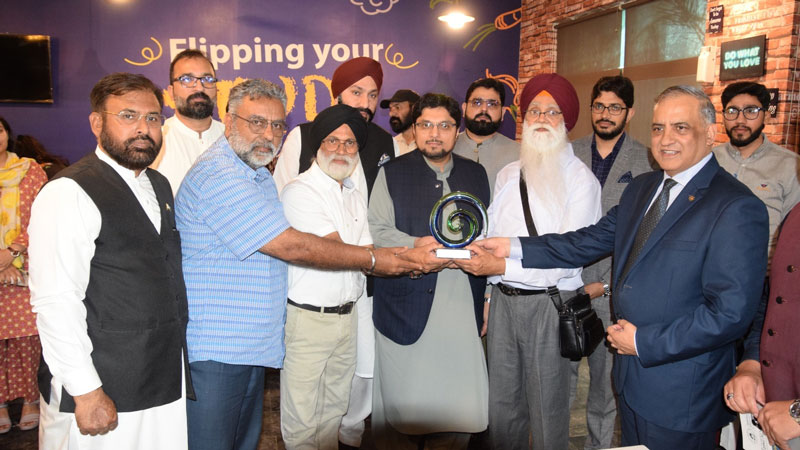
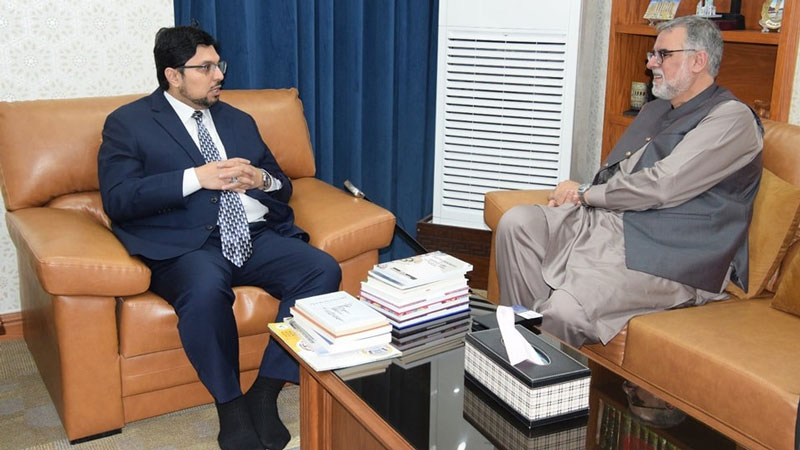
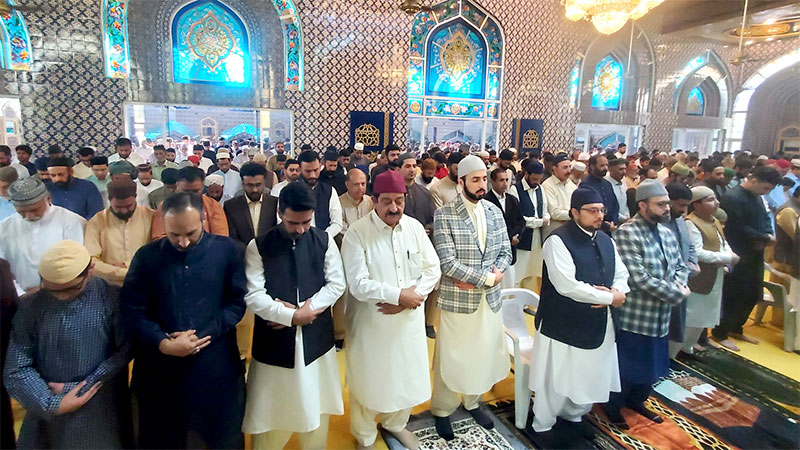


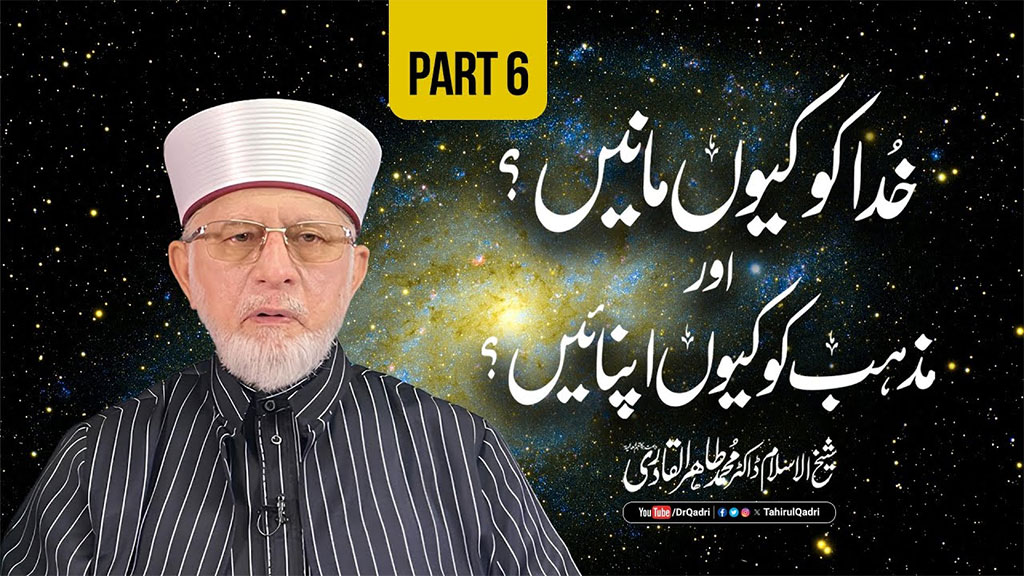
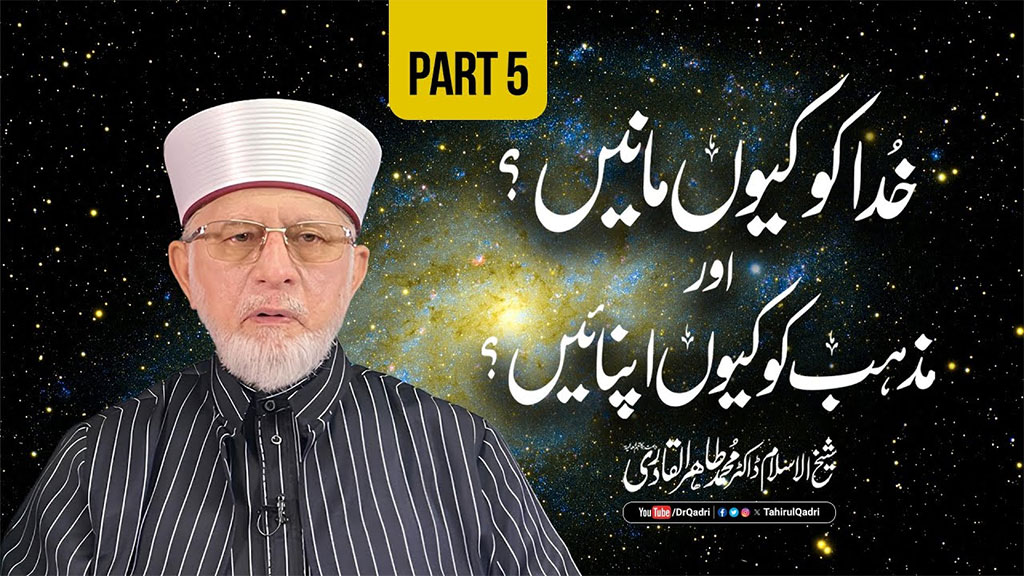
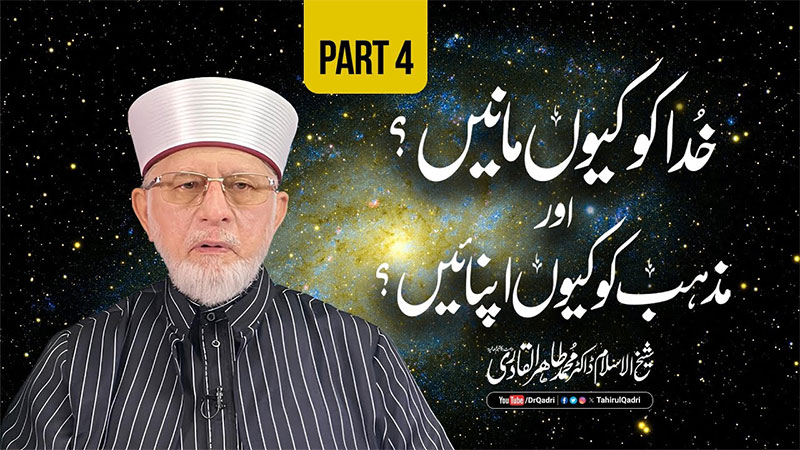
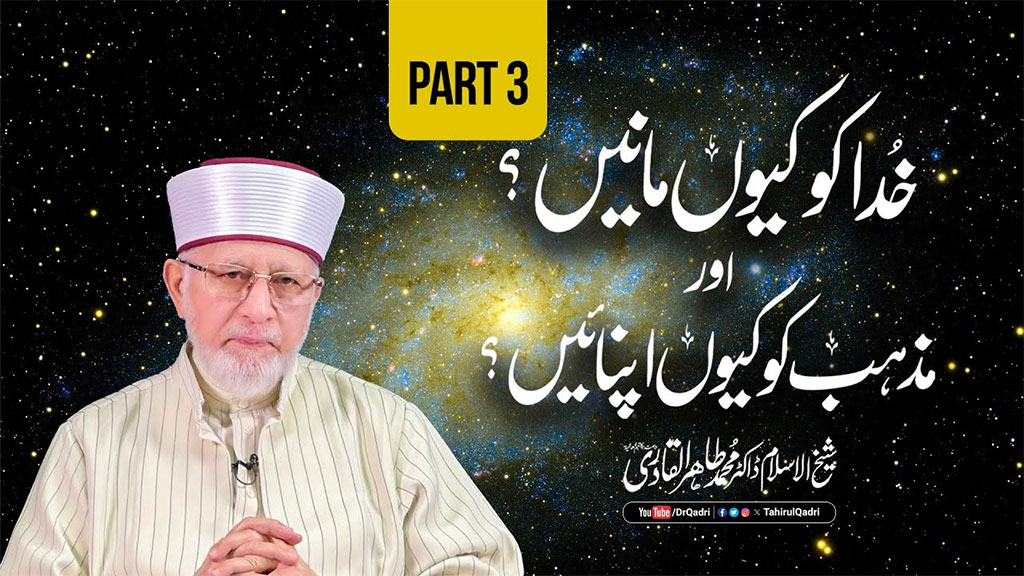





Comments